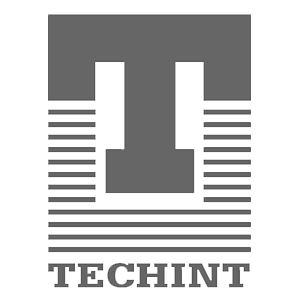Curators: Nise da Silveira (in memorian) - Luiz Carlos Melio
Sponsor: Brazil +500 Argentina - Siat S.A. - Siderca S.A. - Confab - Organización Techint
April 21 to June 17, 2001
--
"Imágenes del Inconsciente" is one of the modules in the great exhibition of the rediscovery of Brazil, presented last year in São Paulo.
This module outlines one of the most representative concepts of the modern era, studied with special attention during the twentieth century: the incorporation of marginal art to art history. This contribution appears with the discovery of the Unconscious that generated new comprehension on the idea of artistic creation, the work of art and the artist.
The historical avant-garde investigated and experienced new forms of approximation to the art and its forms of representation, and this brought new valuation categories of the work.
Modern artists put special attention in marginal art, the art of the children, the art of the tribal cultures, the archaeologic manifestations and also the naive art, or the art accomplished by the sick mental.
The references of the African art in cubism, the attention of Paul Klee on the visual language of the children, the appreciation that Henri Rousseau had among his contemporaries, and Dubuffet's valuation on marginal art, are all well known aspects of recent art history.
The surrealistic tried voluntarily to be identified with psicologically altered states, forcing the unconscious into the logic rationality of the conscience. The validation of the irracional as agent of creation.
The art of the mentally ill was appreciated in all its dimension by the most important artists of the century and many poets, writers and painters also attempted to provoke altered psicological states to widen the frontiers of the conscience and to investigate new sources for the artistic creation.
The modern art was by moments so uncomprehended as the marginal art. The following statement of Luiz Carlos Mello shows clearly this situation: "during the Germany nazi period Joseph Goebbels organized the travelling exhibition "Degenerated Art", that consisted in comparing art works of the sick mental in the Heidelberg Collection, with the works of modern artists such as C‚zanne, Van Gogh, Klee, Kandinsky, Kokoshka, Chagall and others. Great irony, that attitude ended up proving that the frontier among the "normal" and "mentally ill" art is not clear.
These artistic experiences and the new analytical therapeutic methods, permitted to understand the artistic phenomenon in the marginal states, and to appreciate them in their artistic dimension beyond their condition. The curator continues: "beyond all conventions, creativity is imposed more than ever. If the public had no references of the origin of this production, they would not realize of the fact that the works were created in psiquiatric hospitals".
"The images of the unconscious are almost a symbolic language that the psychiatrist must decipher. But nobody prevents that those images and signs will be, beyond all, harmonious, seductive, dramatic, live or beautiful, being themselves real works of art".
Brazil, thanks to the professional contribution of art critics and artists, created one of the most interesting institutions for the recovery of the artistic creation of the mentally ill. The Images of the Unconscious Museum was established by the Dr. Nise Da Silveira at Rio de Janeiro in 1952 and since then proposes therapies with a strong presence of expressive activities as the painting, the modeling and the xylography.
When Mario Pedrosa starts working in the project of the Museum of Brazilian Culture, he includes Museum of the Unconscious with contemporary art, with equal value and without discrimination with the art of Europe or of the aboriginal production. These new concepts enrich the usual conceptualization "history of the art". The argument of Mario Pedrosa is vehement: "The work of Dr. Nise Da Silveira consisted precisely in demonstrating that it is possible be insane and artist at the same time." The production of many artists in the Museum of the Unconscious are part of brazilian art history, without discrimination on their or¡gens and givin real value to the works and their fundamental contribution to contemporary art".
The exhibition curated for Fundación PROA by Luiz Carlos Melo based on the curatorial project of the Dr. Nise Da Silveira, presents five of the most relevant artists with different approximations to art. They all contain a clear parallelism with the work of twentieth century artists. Arthur Bispo Do Rosario, Carlos Petruis, Fernado Diniz, Raphael Domingues and Arthur Amora, outline their particular experiences, with different esthetic concepts, and with a moving relationship with their lives and the ways of acomplishing the works of art. The central body of the exhibition is the work of Arthur Bispo Do Rosario, who navigates along multiple languages and aesthetics experiences with notable parallelism with the history of the modern art.
We want to homage Dr. Nise Da Silveira for her deep human knowledge and the work accomplished in guarding these artworks, to Luiz Carlos Mello for the works selection that permits us to enrich our knowledge of art.
Fundación Proa considers that this exhibition continues with the principles of its program, offering new approaches on contemporary art, and enriching the frontiers to judge man in relation to artistic creation.
Organiza
Fundación Proa
Curaduría
Dra. Nise Da Silveira
(in memoriam)
Luiz Carlos Mello
Escenografía
Daniela Thomas
Montaje
Sergio Avello
Diseño gráfico
Guillermo Goldschmidt
Textos
Nise Da Silveira
Luiz Carlos Mello
Documentación
Fernando Bruno
Prensa y difusión
Manuel Ameztoy
Auspicia
Assocuaçao Brasil 500+ Argentina
Siat S.A.
Siderca S.A.
Confab
Organización Techint

